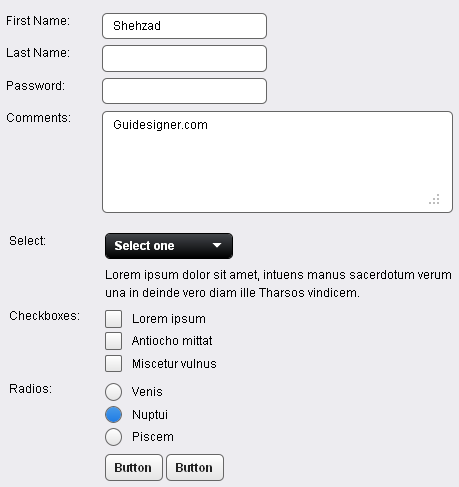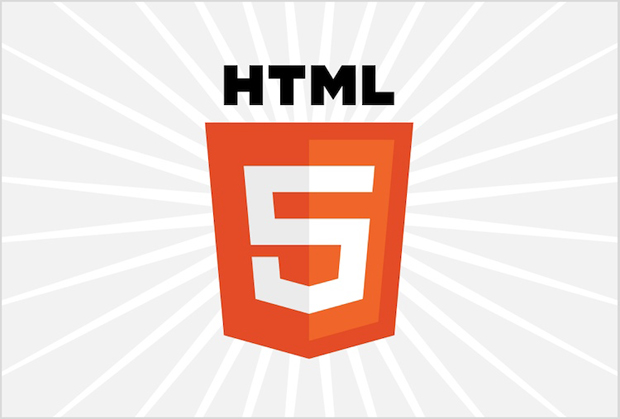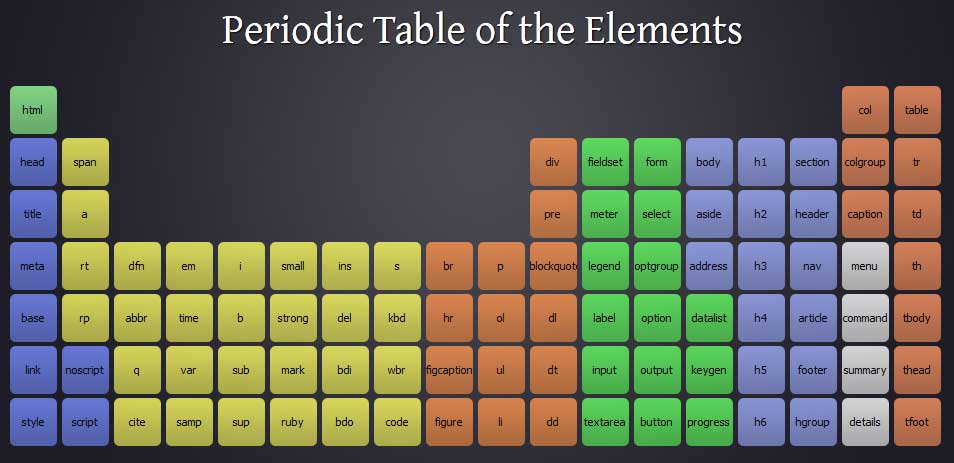Collection of Best Books For Designers, Typography Lovers And Freelancers
Please feel free to let me know which ones are you favorite in the comment section and of course if a book you’ve read isn’t on this list, let me know about it so I can check it out! 🙂

Web Standards Solutions: The Markup and Style Handbook
Author: Dan Cederholm
Topics: CSS, HTML, Design, Web-Standards
Web Standards Solutions is broken down into 16 short chapters, each covering the theory and practice of different web standards concepts and showing multiple solutions to given problems for easy learning. You’ll learn about multi-column layouts, using image replacement techniques to your best advantage, making the best use of tables and lists, and many more. This highly modular approach allows you to rapidly digest, understand, and utilize the essentials of web standards.
The Elements of Typographic Style

Author: Robert Bringhurst
Topcis: Typography, Design, Style
This lovely, well-written book is concerned foremost with creating beautiful typography and is essential for professionals who regularly work with typographic designs. Author Robert Bringhurst writes about designing with the correct typeface; striving for rhythm, proportion, and harmony; choosing and combining type; designing pages; using section heads, subheads, footnotes, and tables; applying kerning and other type adjustments to improve legibility; and adding special characters, including punctuation and diacritical marks.
Thinking with Type: A Critical Guide for Designers, Writers, Editors, & Students (view the companion site)

Author: Ellen Lupton
Topics: Typography, Design, Theory, Education
The organization of letters on a page or screen is a fundamental challenge for a designer. For those learning the craft or brushing up on typographic skills, Thinking with Type provides clear and concise guidance. The material is divided into three sections: letter, text and grid. Each section begins with a review of historical, technological and theoretical concepts, followed by practical exercises and examples. A companion website will provide supplemental material, including lesson plans and additional exercises.
CSS Mastery: Advanced Web Standards Solutions

Author: Andy Budd, Simon Collison, Cameron Moll
Topics: Web Standards, CSS, Techniques
Over the past couple of years, web designers and developers have begun taking more care in designing and building web sites. Less readily do they turn to old-fashioned techniques such as GIF spacers, tables for layout, and deprecated HTML elements, which can cause accessibility/usability problems and are just bad practice. There are three main web standards married together to create usable, standards-compliant web designs – XHTML for data structure, JavaScript for dynamic effects, and Cascading Style Sheets for styling your data.
The Art and Science of CSS

Author: Jonathan Snook, Steve Smith, Jina Bolton, Cameron Adams, David Johnson
Topics: CSS, Web-Standards, HTML
CSS-based design doesn’t need to be boring. The Art & Science of CSS brings together a talented collection of designers who will show you how to take the building blocks of your web site’s design (such as headings, navigation, forms, and more) and bring them to life with fully standards-compliant CSS.
Don’t Make Me Think: A Common Sense Approach to Web Usability

Author: Steve Krug
Topics: Usability, Design, UX
The title of the book is its chief personal design premise. All of the tips, techniques, and examples presented revolve around users being able to surf merrily through a well-designed site with minimal cognitive strain. Readers will quickly come to agree with many of the book’s assumptions, such as “We don’t read pages–we scan them” and “We don’t figure out how things work–we muddle through.” Coming to grips with such hard facts sets the stage for Web design that then produces topnotch sites.
Designing with Web Standards

Author: Jeffrey Zeldman
Topics: Web-Standards, Theory, XHTML, CSS
Standards are our only hope for breaking out of the endless cycle of testing that plagues designers hoping to support all possible clients. In this book, he explains how designers can best use standards–primarily XHTML and CSS, plus ECMAScript and the standard Document Object Model (DOM)–to increase their personal productivity and maximize the availability of their creations. Zeldman’s approach is detailed, authoritative, and rich with historical context, as he is quick to explain how features of standards evolved. It’s a fantastic education that any design professional will appreciate.
Bulletproof Web Design: Improving Flexibility And Protecting Against Worst-Case Scenarios With XHTML And CSS

Author: Dan Cederholm
Topics: Web-Design, CSS, XHTML, Usability
No matter how visually appealing or content-packed a Web site may be, if it’s not adaptable to a variety of situations and reaching the widest possible audience, it isn’t really succeeding. In Bulletproof Web Desing, author and Web designer extraordinaire, Dan Cederholm outlines standards-based strategies for building designs that provide flexibility, readability, and user control–key components of every sucessful site.
Caffeine for the Creative Mind: 250 Exercises to Wake Up Your Brain

Author: Stefan Mumaw, Wendy Lee Oldfield
Topics: Creativity, Inspiration, Exercises
For any designer or creative type who wants to quickly limber up their imagination on a daily basis, Wired helps readers get into the creative zone, from which all their best work springs. Packed with 15-minute simple and conceptual exercises, this guide will have readers reaching for markers, pencils, digital cameras, and more in order to develop a working and productive creative mindset.
Layout Workbook: A Real-World Guide to Building Pages in Graphic Design

Author: Kristin Cullen
Topics: Graphic Design, Theory, Layout
More than a collection of great examples of layout, this book is an invaluable resource for students, designers, and creative professionals who seek design understanding and inspiration. The book illuminates the broad category of layout, communicating specifically what it takes to design with excellence. It also addresses the heart of design-the how and why of the creative process.
The Zen of CSS Design: Visual Enlightenment for the Web

Author: Dave Shea, Molly E. Holzschlag
Topics: CSS, Web-Design, Typography
Proving once and for all that standards-compliant design does not equal dull design, this inspiring tome uses examples from the landmark CSS Zen Garden site as the foundation for discussions on how to create beautiful, progressive CSS-based Web sites. By using the Zen Garden sites as examples of how CSS design techniques and approaches can be applied to specific Web challenges, authors Dave Shea and Molly Holzschlag provide an eye-opening look at the range of design methods made possible by CSS.
Sexy Web Design: Creating Interfaces that Work

Author: Elliot Jay Stocks
Topics: Web-Design, Interface Design, CSS
Sexy Web Design is an easy-to-follow guide that reveals the secrets of how to build your own breathtaking web interfaces from scratch. You’ll be guided through the entire process of creating a gorgeous, usable web site by applying the timeless principles of user-centered design.
Even if you’re short on design skills, with this book you’ll be creating your own stunning web sites in no time at all.
The Web Designer’s Idea Book: The Ultimate Guide To Themes, Trends & Styles In Website Design

Author: Patrick Mcneil
Topics: Ideas, Design, Inspiration
The Web Designer’s Idea Book includes more than 700 websites arranged thematically, so you can find inspiration for layout, color, style and more. Author Patrick McNeil has cataloged more than 20,000 sites on his website, and showcased in this book are the very best examples.
Sites are organized by color, design style, type, theme, element and structure. It’s easy to use and reference again and again, whether you’re talking with a co-worker or discussing website design options with a client. As a handy desk reference for design layout, color and style, this book is a must-have for starting new projects.
HTML, XHTML, and CSS Bible

Author: Steven M. Schafer
Topics: CSS, HTML, XHTML, Web-Design
Decipher the code, use the right tools, and conquer the online world of the World Wide Web. This comprehensive guide demystifies HyperText Markup Language (HTML) and Cascading Style Sheets (CSS) so you can create sophisticated and interactive Web pages, robust applications, and as many other ways of interacting on the Web as you can think of. You’ll even learn to code cool content for many mobile devices that include a browser. Inside, find all the tools, tips, and techniques you need to succeed.
The Essential Guide to CSS and HTML Web Design

Author: Craig Grannel
Topics: Web-Design, CSS, HTML
The Essential Guide to CSS and HTML Web Design is a special book—it will tell you all you need to know to design great web sites that are standards compliant, usable, and look great, but not overwhelm you with waffle, theory, and obscure details. It is designed to be invaluable to you, whatever stage you are at in your career, with a mixture of practical tutorials and reference material—beginners will quickly pick up the basics, while more experienced web designers and developers will keep returning to the book again and again to recap on techniques they maybe haven’t used for a while, or look up properties, attributes and other details.
The Unusually Useful Web Book

Author: June Cohen
Topics: Web-Design, Usability, Project Management
The Unusually Useful Web Book is the only book you need to find out everything you need to know about web sites. In fact, it’s 2 books in 1. You can skim the sidebars and checklists for tips and techniques you can use right away. Or you can follow along with the main text for a detailed discussion of planning, designing, building, and maintaining your web site.
The Unusually Useful Web Book is jam-packed with do-it-yourself worksheets, lessons from the trenches, advice from experts, and jargon-free explanations.
How To Be A Rockstar WordPress Designer

Author: Collis Ta’eed, Harley Alexander
Topics: WordPress, Web-Design, CSS, XHTML
Managing web content has always been tricky, but with WordPress, any web designer can have a flexible, free and powerful CMS to use not just on blogging projects, but on all sorts of websites. In How To Be a Rockstar WordPress Designer you will learn step by step how to take a straight HTML site and power it with WordPress.
Web Bloopers: 60 Common Web Design Mistakes, and How to Avoid Them

Author: Jeff Johnson
Topics: Web-Design, Usability, Theory, GUI
Provides web designers with the do’s and don’ts of designing web site graphic-user interfaces (GUI)
A Project Guide to UX Design: For user experience designers in the field or in the making

Author: Russ Unger, Carolyn Chandler
Topics: User Experience, UX, Design, Usability
User experience design is the discipline of creating a useful and usable Web site or application—one that’s easily navigated and meets the needs of both the site owner and its users. But there’s a lot more to successful UX design than knowing the latest Web technologies or design trends: It takes diplomacy, project management skills, and business savvy. That’s where this book comes in. Authors Russ Unger and Carolyn Chandler show you how to integrate UX principles into your project from start to finish.
Modular Web Design: Creating Reusable Components for User Experience Design and Documentation

Author: Nathan A. Curtis
Topics: User Experience, Design,
User experience design teams often suffer from a decentralized, blank canvas approach to creating and documenting a design solution for each new project. As teams repeatedly reinvent screen designs, inconsistency results, and IT teams scramble to pick up the pieces. Pattern libraries only go so far, suggesting general solutions to common problems instead of offering concrete, specific design treatments. At times, documented solutions turn into a costly mess of unclear expectations, unrealistic goals, and abandoned work.
The Unlimited Freelancer

Author: Mason Hipp, James Chartrand
Topics: Freelancing, Business, Tips
If you’re like most freelancers, you have a ton of potential: potential to grow a successful business, potential to make a lot of money, potential to do incredible things.
Think about it — freelancers have all the right traits. Strong will, independence, intelligence, creativity, and lots of professional ability. Most freelancers have everything they need to be wildly successful.
So why don’t we all have the life of our dreams?
How To Be A Rockstar Freelancer

Author: Collis Ta’eed, Cyan Ta’eed
Topics: Freelancing, Business, Tips
Covering everything from getting started to expanding your business, How to Be a Rockstar Freelancer is the official FreelanceSwitch book. Written by Collis & Cyan Ta’eed – the founders of the site – it’s packed with new information, advice and insights not covered on the blog.
If you want to start your freelance career the right way, then How to Be a Rockstar Freelancer will give you everything you need to become the best freelancer in town!
Website Owner’s Manual

Author: Paul Boag
Topics: Web-Design, Business, General
The job of planning, launching, and managing a site often falls to people who have little or no experience in web design or development.
Website Owner’s Manual helps you form a vision for your site, guides you through the process of selecting a web design agency, and gives you enough background information to make intelligent decisions throughout the development process. This book provides a jargon-free overview of web design, including accessibility, usability, online marketing, and web development techniques. You’ll gain a practical understanding of the technologies, processes, and ideas that drive a successful site.
Recharge Your Design Batteries

Author: by John O’Reilly, Tony Linkson
Topics: Design, Creativity, Inspiration
As a designer, if you find yourself going down the same route time and again, and feel in need of an injection of ideas, then Recharge Your Design Batteries will help shock you out of your complacency, inspire you to look in new directions for radical solutions, and invite you to hone entirely new skill sets.
Stop Stealing Sheep & Find Out How Type Works

Authors: Erik Spiekermann, E.M Ginger
Topics: Typography, Type, Theory
Stop Stealing Sheep, Second Edition is a unique, entertaining, and educational tour through the most basic unit of written communication: type. World-renowned type experts Erik Spiekermann and E.M. Ginger explain in everyday laymen’s terms what type is and how you can use it to enhance the legibility, meaning, and aesthetic level of your work.

 A Light weight, small framework for beautiful forms: Ideal Forms
A Light weight, small framework for beautiful forms: Ideal Forms  How to Start a Functioning Website Under Thirty Dollars 2021?
How to Start a Functioning Website Under Thirty Dollars 2021?  The HTML5 Time Element Is Back and Better Than Ever
The HTML5 Time Element Is Back and Better Than Ever  Mozilla Introduce Firefox 9, with Speed and less memory improvements
Mozilla Introduce Firefox 9, with Speed and less memory improvements  Periodeic table of HTML5 Elements, arrange by type.
Periodeic table of HTML5 Elements, arrange by type.